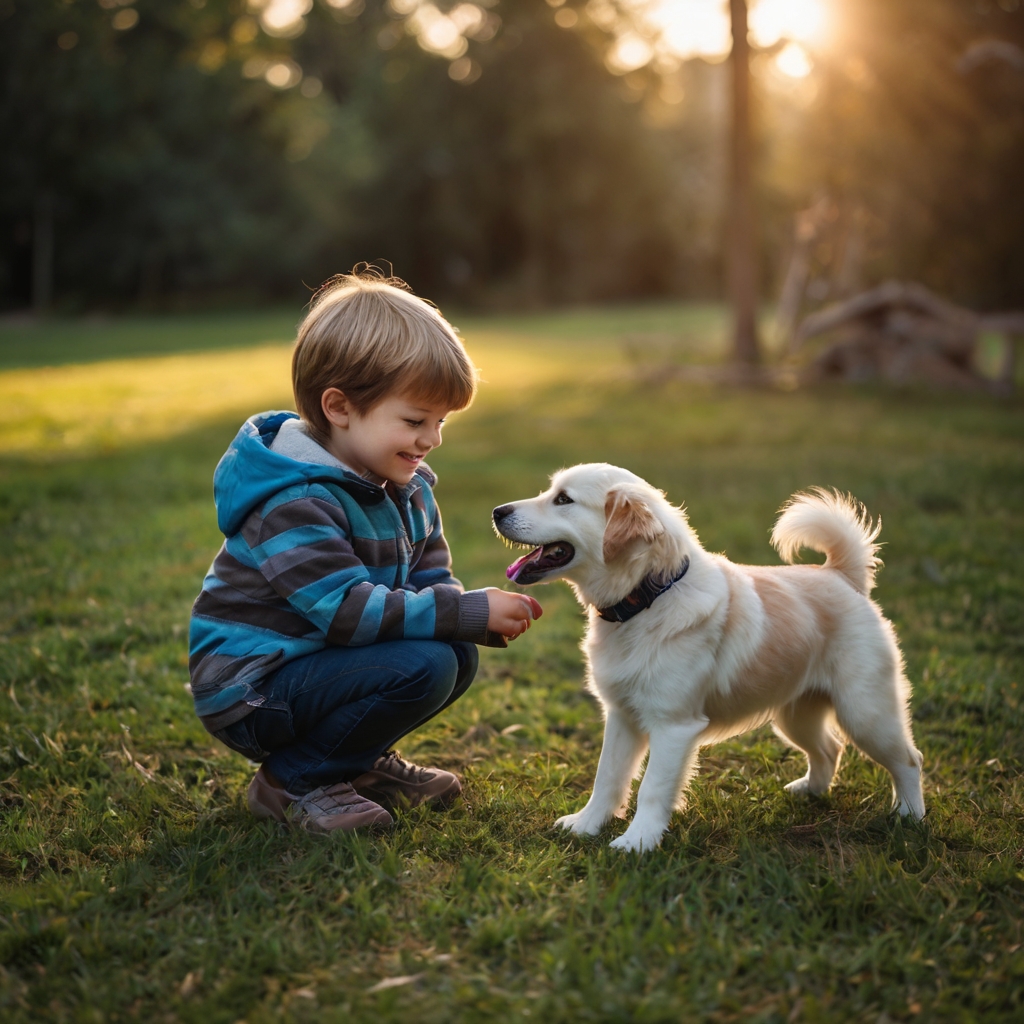Learn how to create harmony between pets and kids. Follow these tips to introduce a pet into a home with children and ensure a happy, safe relationship.
Introducing a pet into a home with children—or vice versa—can be magical. The bond between pets and kids is often one of the most rewarding experiences for both. However, harmony between them requires structure, patience, and understanding on both sides. Here’s how to ensure a successful and peaceful relationship between pets and children.
1. How to Live with Pets and Kids: Teach Respect from Day One
The first step in fostering harmony is teaching kids respect for pets. Children must learn that pets are not toys. They are living beings with feelings, boundaries, and needs. Start by showing them how to gently approach, pet, and interact with animals. Emphasize the importance of respecting their personal space and not disturbing them while they’re resting or eating.
This respect should extend to your child’s tone of voice and actions—loud noises or sudden movements can startle pets and lead to anxiety. By fostering an environment of mutual respect, you’re teaching your children empathy and kindness towards animals from an early age.
2. Supervise All Early Interactions: Essential for Safety
Always supervise young children when they are near pets. Even the most friendly and well-trained animals can feel overwhelmed or threatened by sudden movements or loud noises, especially if the child is very young or excitable. Pets may react unpredictably if they feel cornered or scared, so supervision is crucial during the initial interactions.
As your child becomes more comfortable with the pet, supervision can gradually decrease, but always be present for guidance, especially when both are still learning how to coexist peacefully.
3. Assign Age-Appropriate Responsibilities: Involve Kids in Pet Care
Involving your children in the care of your pets can be an excellent way to teach them responsibility and empathy. Assign age-appropriate tasks such as feeding, brushing, or refilling water bowls. Even younger children can assist with less demanding chores like cleaning up toys or filling a water bowl.
As your child grows older, they can take on more significant responsibilities, like walking the dog or grooming the pet. Not only does this promote responsibility, but it also strengthens the bond between your child and the pet.
4. Create Safe Spaces for Pets: A Sanctuary for Rest
Just as children need a place to call their own, pets also need a quiet space to retreat to when they’re feeling tired or overwhelmed. Pets often seek out a quiet spot to rest and recharge. Ensure your child knows that this area is off-limits for playtime or interaction.
Create a designated, safe space where your pet can go to relax, such as a crate, bed, or a quiet room. This helps your pet feel secure and allows them to escape from any chaotic moments in the house. It’s equally important that children respect this boundary to prevent stress for both the pet and the child.
5. Match the Right Pet with the Right Child: Consider Temperament and Needs
Not all pets are equally tolerant of children, and not all children are ready to handle every type of pet. Some breeds or species of animals are naturally more patient and gentle with children, while others may be better suited to adult-only households. Before adopting a pet, it’s crucial to research the animal’s temperament and behavior traits to ensure a good match with your child’s age and personality.
Consult with a vet, shelter, or adoption center to help determine which pet would be the best fit for your family. They can offer guidance based on your household dynamics and the pet’s specific needs, ensuring a better fit and reducing the risk of potential conflicts.
6. How Pets and Kids Benefit Each Other: Fostering Emotional Bonds
Pets and children often form deep emotional bonds that benefit both parties. Studies have shown that children who grow up with pets tend to develop higher levels of empathy, responsibility, and emotional intelligence. These relationships can also boost a child’s confidence and teach them valuable lessons about trust, love, and kindness.
The companionship that pets offer can also help children navigate their emotions. Pets provide unconditional love and can serve as a comforting presence during tough times. For many children, their bond with a pet is one of the most cherished relationships in their lives.
Pets and Kids: A Lifelong Friendship
With the right preparation and guidelines, pets and children can form the best of friendships. By teaching respect, providing safety, and setting clear boundaries, you can ensure that both your child and your pet thrive in their shared space. The key to success is patience and understanding, and with these principles in place, pets and kids will create beautiful memories together for years to come.
Read More


